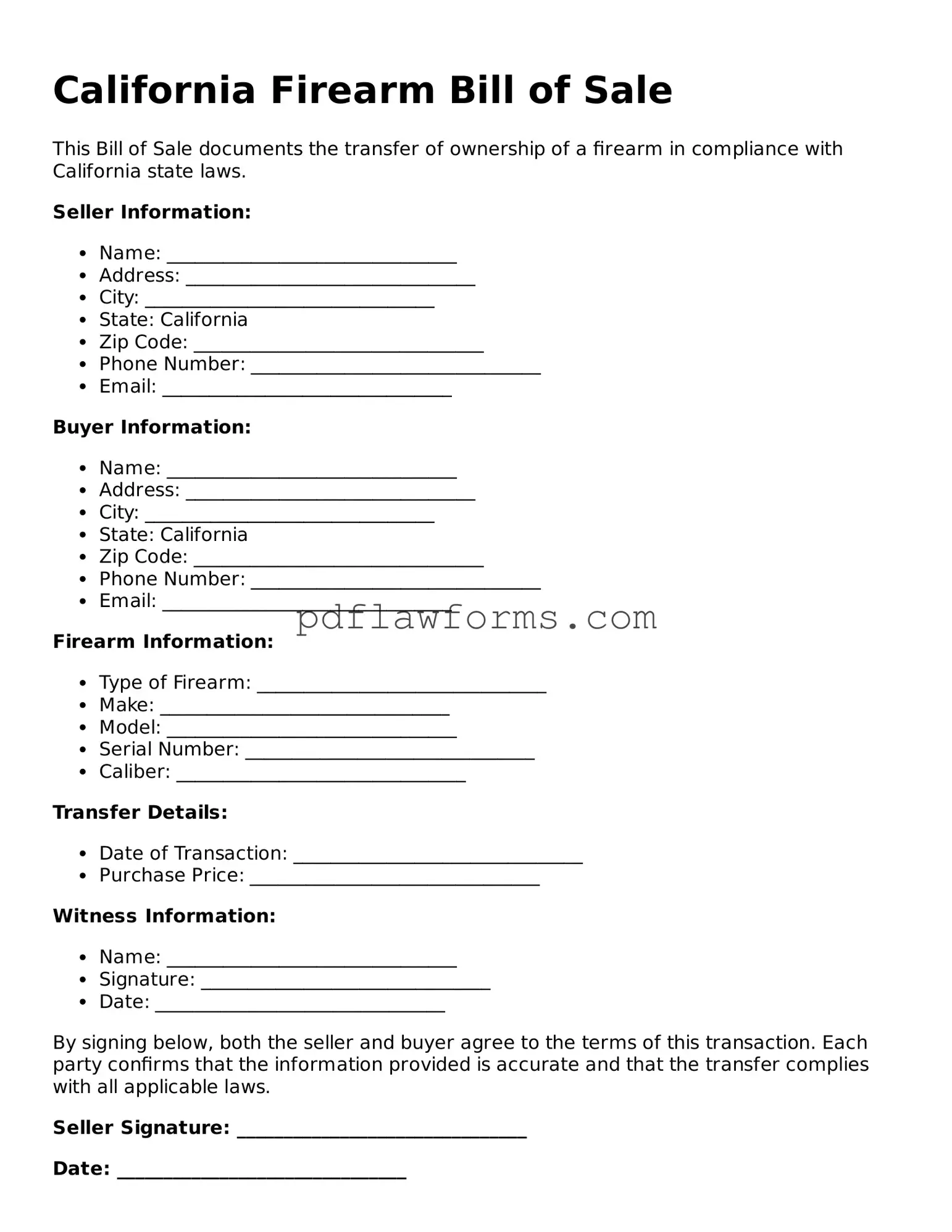Completing the California Firearm Bill of Sale form requires attention to detail. One common mistake is failing to include all required information. Buyers and sellers must provide accurate names, addresses, and identification details. Omitting even a single piece of information can lead to delays or complications in the transaction.
Another frequent error is not ensuring that both parties sign the document. A signature is essential to validate the sale. If either the buyer or seller neglects to sign, the form may be deemed incomplete, rendering the transaction invalid.
Many individuals overlook the importance of checking the serial number of the firearm. The serial number must match the firearm being sold. Discrepancies can raise questions about the legality of the sale and may result in legal issues for both parties.
Inaccurate dates are also a common mistake. The date of the transaction must be clearly stated. If the date is missing or incorrect, it could complicate record-keeping and future reference, which is vital for both the buyer and seller.
Some people fail to understand the implications of leaving blank spaces on the form. Blank fields can create confusion and may be interpreted as incomplete information. It is crucial to fill out every section of the form, even if it means writing “N/A” for non-applicable items.
Misunderstanding the buyer's eligibility can lead to problems. Buyers must meet certain legal requirements to purchase a firearm. If a seller does not verify this information, they risk legal repercussions, including penalties for selling to an ineligible buyer.
Another mistake involves not retaining a copy of the completed form. Both parties should keep a copy for their records. This documentation serves as proof of the transaction and can be invaluable in case of future disputes or inquiries.
People often neglect to review the form before submission. A final review can catch errors that may have been overlooked during the initial completion. Taking the time to double-check the information can prevent unnecessary complications.
Lastly, misunderstanding the legal requirements surrounding the sale can lead to significant issues. Familiarizing oneself with California firearm laws is essential. Ignorance of these regulations can result in unintended violations and consequences for both parties involved in the transaction.
